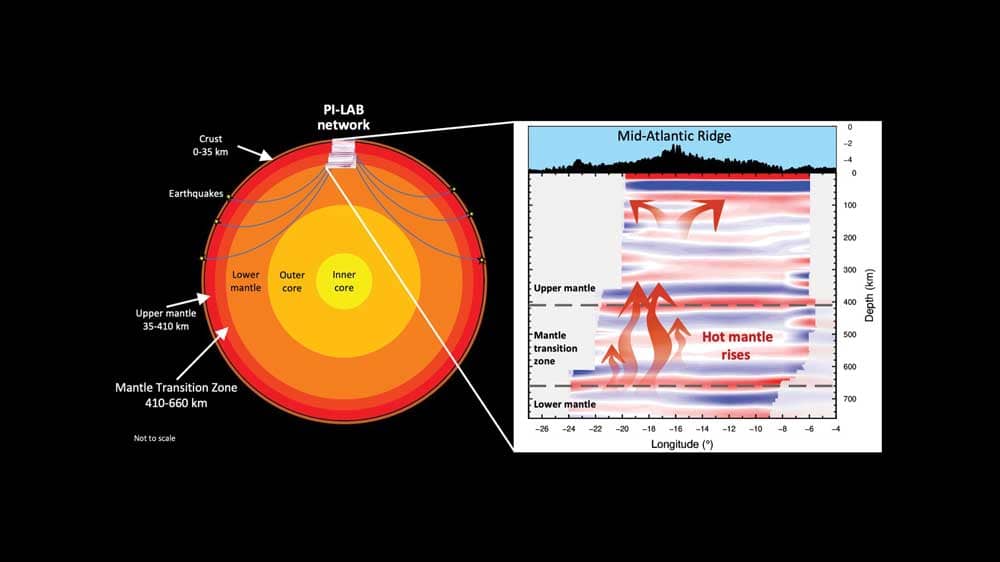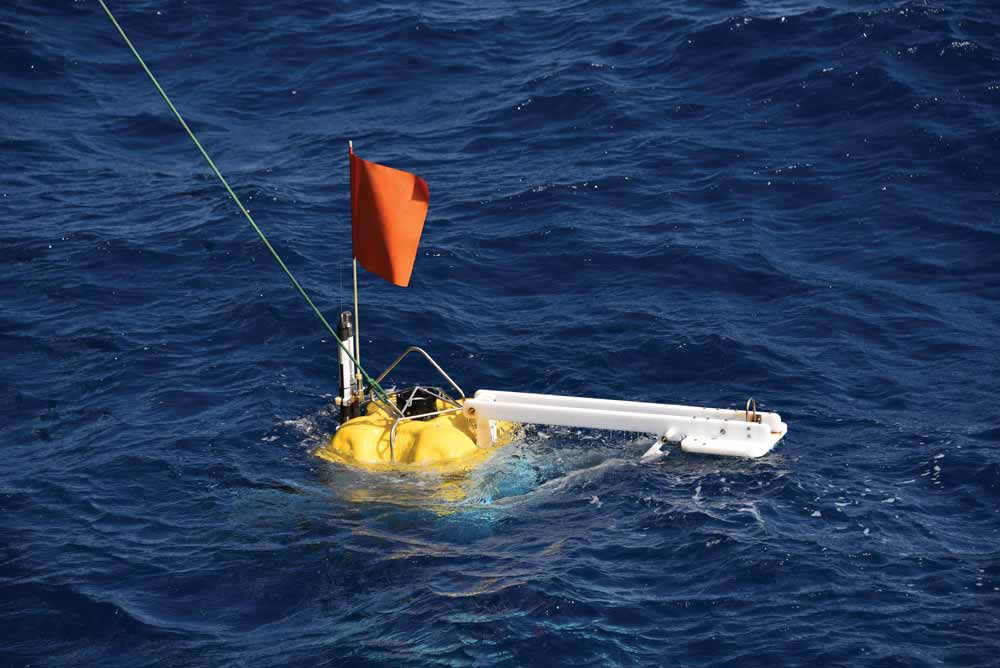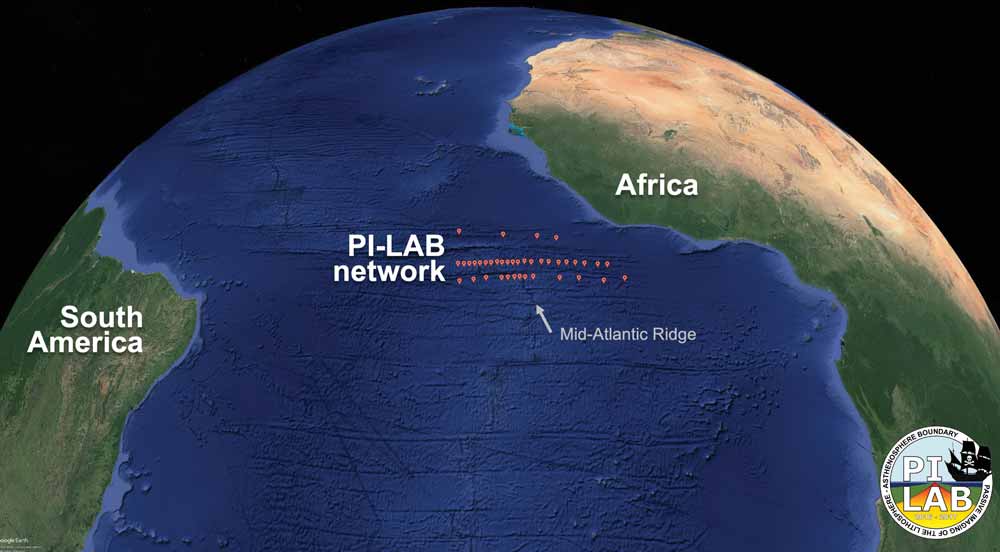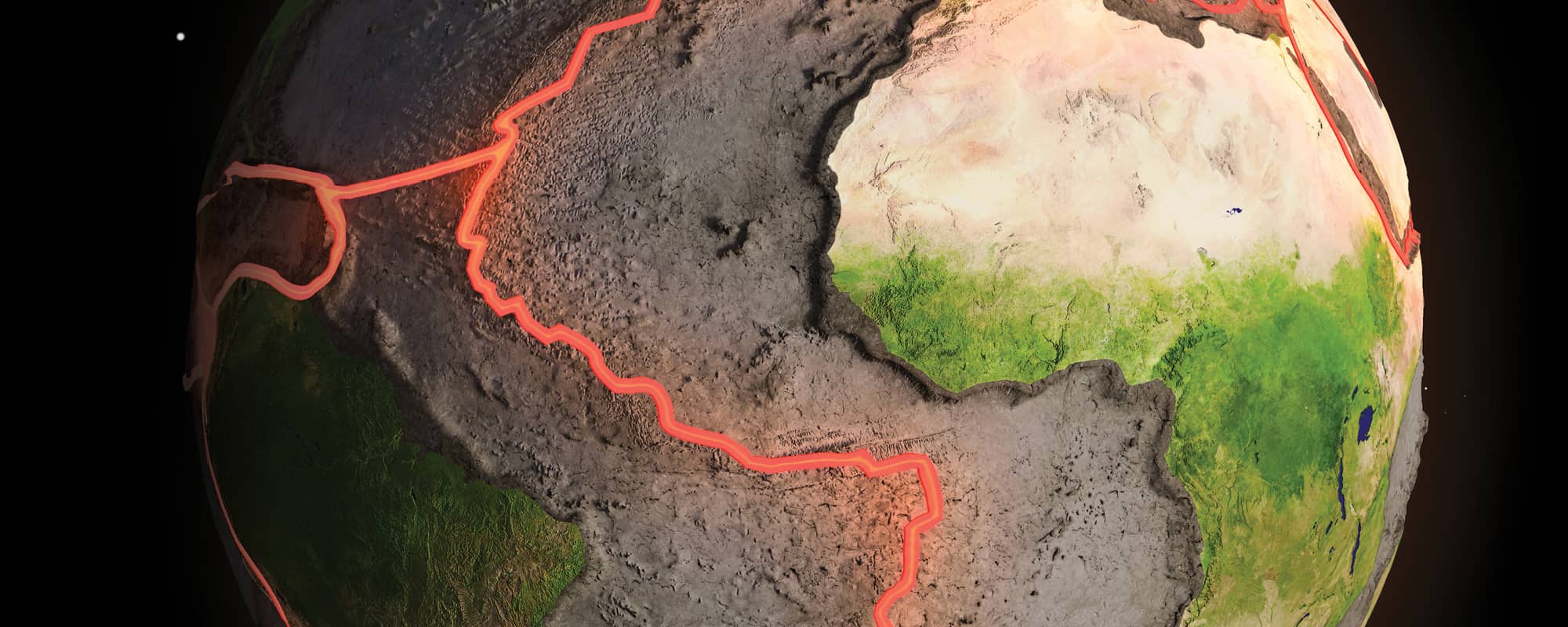Maltese seismologist Matthew Agius, alongside an international team of researchers, has just identified a thinner-than-average zone in the Earth’s mantle below the mid-Atlantic Ocean. The finding helps explain how the Atlantic Ocean is opening up. The story left ripples worldwide. Words by Emma Clarke.
The inner workings of our own planet can seem as mysterious as the reaches of outer space. For years, scientists debated how our lands and seas formed, until the theory of plate tectonics went mainstream in 1967, the same year that NASA launched its first attempt at a moon landing.
In 1912, German scientist Alfred Vengener first proposed the theory of continental drift. He suggested that today’s land masses had once existed as the huge supercontinent Pangea, which broke into pieces and gradually spread across the world. Vengener’s theory was ridiculed, but 40 years later, new data gave the idea traction. Soon after, researchers found evidence that the Earth’s surface was mobile not static, just as Vengener predicted. The pieces of our world fit together like a huge continental puzzle. Today, we understand a lot more about the geology that supports our everyday lives, but there is still much we don’t know.
Dr Matthew Agius, a Maltese researcher, is working with a team of international scientists to understand more about the tectonic activity of the mid-Atlantic ridge. This ridge separates the American continents from the continents of Europe and Africa. As these continents gradually move further apart, the Atlantic ocean steadily widens. Agius’s work, which is the result of an epic 10-week sea voyage, may explain how the Atlantic ocean was created around 140 million years ago. The study was one of the largest to have ever been performed and was recently published in the prestigious journal Nature and covered by media worldwide.

Plate Tectonics
The revelation of plate tectonics demonstrated how the outer layer of the earth is made up of a patchwork of rocky plates. These plates float on a bed of molten rock called the mantle. Intense heat from the core of the earth triggers a convection system, where hot rock close to the core rises and the cold outer rock at the surface sinks back inside the Earth. Like a conveyor belt, these currents slowly shift the plates on the outer shell of the earth.
This means that even though the outer layer of the earth feels pretty stable most of the time, it’s actually in a constant state of change. Granted, this change happens very slowly. The tectonic plates at the mid-Atlantic ridge move at about 2.5 centimetres per year — that’s about the same rate that human fingernails grow. It might not sound like a lot, but over geological time spans, these powerful forces can shift continents, drive mountain ranges thousands of metres high, and trigger deadly volcanic activity.

Mind the gap!
Around 200 million years ago, the supercontinent Pangea started to break apart and in the process started to form the Atlantic Ocean. As the dinosaurs had started to roam the Earth, the different land masses which formed the supercontinent Pangea were beginning to break apart. Until this point, Europe, Africa, and America had been physically connected, but over the next 100 million years, they would gradually move apart until it became literally impossible for the European dinosaurs to get to a Taco Bell. Now, London and New York are separated by around 3500 miles of Atlantic ocean, a distance which continues to increase.
Scientists have hotly debated the mechanisms involved in this geological area. They agree that the tectonic plates are moving apart, but we are only seeing one side of the story. Until now, the school of thought was that the opening of oceans was caused by distant gravitational forces pulling the dense plates back deep inside the Earth, creating a gap. This gap is filled with new matter that rises from just below the ridge. We can see these processes happen today: the pulling of plates takes place beneath mountain ranges such as the spectacular Himalayas and Andes, and where material rises to fill the gaps, lands such as the amazing volcanic island of Iceland form. Most of this understanding emerged thanks to the hundreds of seismometers deployed on land during the last few decades. However, because there are very few instruments beneath the sea, this limits our knowledge on what is happening, especially since 70% of our planet is covered with water.
Ground-breaking research
To settle the matter, a team of scientists led by principal investigator Dr Catherine Rychert from the University of Southampton undertook a gargantuan experiment. Over the course of 10 weeks spent adrift in the middle of the Atlantic ocean on large ships, the researchers dropped a total of 39 seismometers to the ocean floor. These highly specialised instruments can detect movement from within the earth, usually used to analyse earthquakes. The seismometers were left at the bottom of the ocean to collect data over the course of an entire year.


Very few experiments of this size have ever been done before, and this was the first time the Atlantic ridge had been imaged to such a high standard. The team’s efforts were rewarded when the scientists finally recovered their findings. The results were (literally) groundbreaking.
Dr Nick Harmon, one of the lead researchers, said, ‘There is a growing distance between North America and Europe, and it’s not driven by political or philosophical differences – it is caused by mantle convection.’
Dr Agius led the study that mapped the area between the upper and the lower mantle, known as the Mantle Transition Zone, located between 410 and 660km in depth inside the Earth. They discovered that the transition zone beneath the ridge is thinner than average as a result of an anomalous higher temperature. They concluded that upwelling beneath the ridge is coming from deep within the mantle (over 600km down), much deeper than previously thought. Before, it was thought that surges in the mantle happened at a depth of about 60km, so these findings have shifted how scientists are thinking about tectonic forces. ‘These incredible results shed new light on our understanding of how the earth’s interior is connected with plate tectonics,’ said Agius.
What does it all mean?
Their work showed that this 600km-deep surge could be pushing these massive continents apart. We now have a better understanding of the mechanism that is widening the mid-Atlantic ocean. Ocean ridges like the mid-Atlantic had been assumed to play a passive role in geological processes like the shifting of landmasses. This study shows how they can actively drive our planet’s changing landscape. Agius believes a similar mechanism could be taking place at other plate boundaries, and his goal is to carry out similar experiments in other parts of the world.
A better understanding of plate tectonics has a whole host of important implications. For one thing, the more we understand, the better we can make predictions about natural disasters such as tsunamis and volcanic eruptions. It also gives us an insight into how sea levels and climate change might be affected by tectonic activity. Essentially, tectonic activity can cause uplifting or sinking of land in a particular location, which affects sea levels.
Just as we are slowly starting to unravel the mysteries of space, research into tectonic plates can help us better understand our planet and our role in it. Taking a closer look at what lies beneath the surface of the earth can help scientists piece together the global puzzle of tectonic plates as well as understand how other planets might have evolved. The results might surprise us!
The experiment is funded by the European Research Council (ERC) and Natural Environment Research Council (UK) and directed by Dr Catherine Rychert and Dr Nicholas Harmon at the University of Southampton (UK).
The publication, “A thin mantle transition zone beneath the equatorial Mid-Atlantic Ridge” can be found online.





Comments are closed for this article!